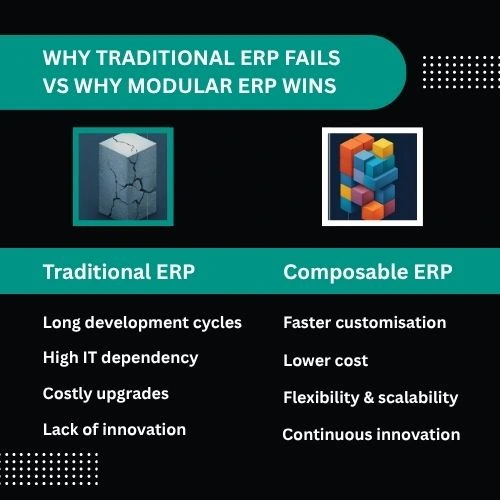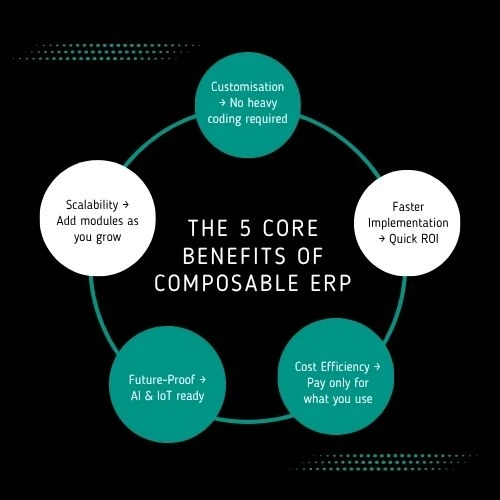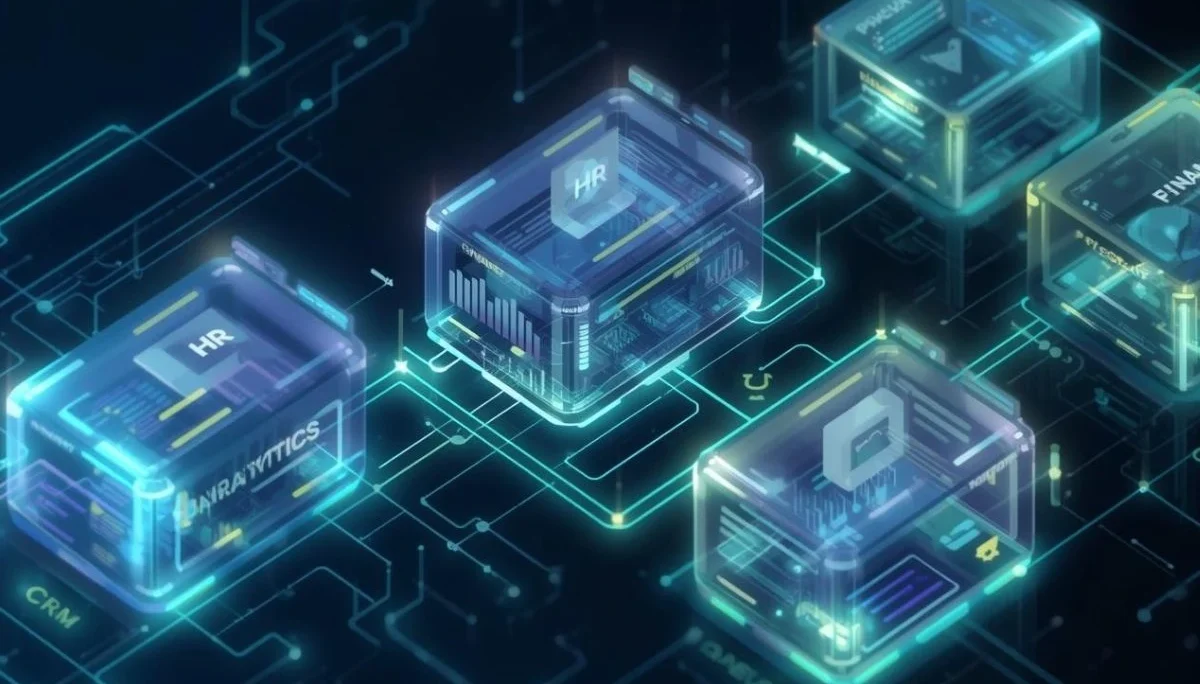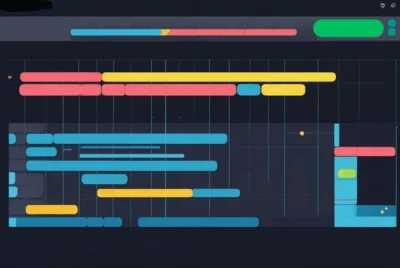The one thing that has become apparent in the dynamic business technology world is that there are no two organisations that are similar. Every business has its own structure, processes, and ambitions — and in most cases, a one-size-fits-all enterprise resource planning (ERP) system fails to meet them. Traditional ERP solutions were efficient and integrated but were usually inflexible, expensive to customise and scaled. Usher in the age of composable modular ERP – a flexible, contemporary solution which enables businesses to tailor their ERP environment without the headaches of overcomplicated solutions.

The traditional ERP dilemma.
Traditional ERP systems also aimed to integrate all the main business processes—such as finance, supply chain, HR, inventory, and customer management—into a single centralised solution.This provided consistency, but at the same time, this brought about a difficulty: rigidity.
Customising monolithic ERP often led to long development cycles, required intense IT participation, and caused expensive upgrades that hampered operations. Companies found themselves trapped between two unwanted options: either forcing their processes to fit the ERP’s constraints or investing in costly custom code that made future upgrades nearly impossible.
This inflexibility led to a lack of innovation and slowness in decision-making, particularly in those industries where speed is paramount. Organisations required something more flexible, an ERP system that would keep in step with business.
What Does ‘Composable Modular ERP’ Mean?
The next-generation solution is called composable modular ERP, which divides ERP functionality into flexible and interoperable modules. Businesses can now select and choose which modules to use – this can be finance, procurement, CRM, human resources, or advanced analytics – rather than be tied to a fixed all-in-one solution.
The composable nature implies that these modules easily integrate with each other and with 3rd-party applications. Similar to building blocks, organisations are able to assemble their ERP environment based on the current requirements and reassemble it as requirements change.
In explanation, Gartner has defined composability to be the capability to modify and recompose capabilities based on business requirements. This is the philosophy that lies at the core of modular ERP: dynamic, flexible and future-ready.
The Key Benefits
1. Customisation that is not complex.
Unlike traditional ERP systems that require heavy custom code, developers configure modular ERP platforms using configurable components. The simple settings, low-code platforms, or APIs enable businesses to customise workflows, dashboards, and integrations. This removes the technical overhead, and personalisation is available.
2. Scalability at Your Pace
An emerging SME can first use basic finance and HR systems, then eventually expand to supply chain or advanced analytics. No need to spend extra cash upfront or even risk expanding the system too fast – ERP expands in tandem with the business.
3. Faster Implementation
Businesses start with core modules and expand over time, which tremendously reduces implementation times.This guarantees little or no disruption and quicker ROI than the conventional, all-at-once rollouts of ERP.
4. Future-Proof Flexibility
ERP systems that are changeable are composable. It could be implementing AI-based forecasting or incorporating an IoT into the production process or plugging in a new e-commerce solution, but modular ERP allows you to change more readily without restructuring the entire system.
5. Cost Efficiency
In modular ERP, businesses will only pay as they use. This prevents the high cost of licensing of monolithic ERP applications and eliminates the high cost of maintaining unused features.

A Real-World Example
Take a medium-sized manufacturing organisation that would like to modernise its processes. It would traditionally buy a complete ERP suite, although it only requires financials, procurement and inventory management immediately.
Using composable modular ERP, the company is able to:
In the initial stages, begin with finance and procurement modules to streamline the suppliers.
• Install a stock tracker module afterwards to monitor the stock.
• When sales operations are to be expanded, integrate a customer relationship management (CRM) tool.
• Once operations are further scaled, plug in AI-powered analytics to make demand predictions.
All modules are interlinked, without the intensive IT modernisation expected with the old type of ERP. This managed approach maintains a low cost and makes technology respond to the business priorities.
Overcoming Misconceptions
Although modular ERP offers agility, fragmentation or integration is an issue that is a concern to some businesses. Modern platforms avoid this issue by using API-first designs and normalised data models that make them interoperable. This is to say that businesses are free to gain flexibility and cohesion at the same time, coexisting without disorder.
The other myth is that modular ERP is exclusive to the large organisation. The real beneficiaries are the SMEs, since they can enjoy the benefits of enterprise-level functionality without having to spend as much on installation.
The Future of ERP Is Composable.
Speed, flexibility, and customer-focused innovation are the key principles of the digital economy. Companies simply cannot spare the luxury of having to be held back with old, inflexible ERP systems. Composable modular ERP offers a way ahead: a way that combines the best of both worlds: robust functionality and the ability to customise and scale.
Thinking about ERP as a set of flexible building blocks, as opposed to a fixed structure, organisations can open the door to technology as an engine of growth, but not a hindrance.
Composable modular ERP in a nutshell captures the concept of customisation without complexity – a very strong sell to any business willing to go through change and survive in the contemporary marketplace.





